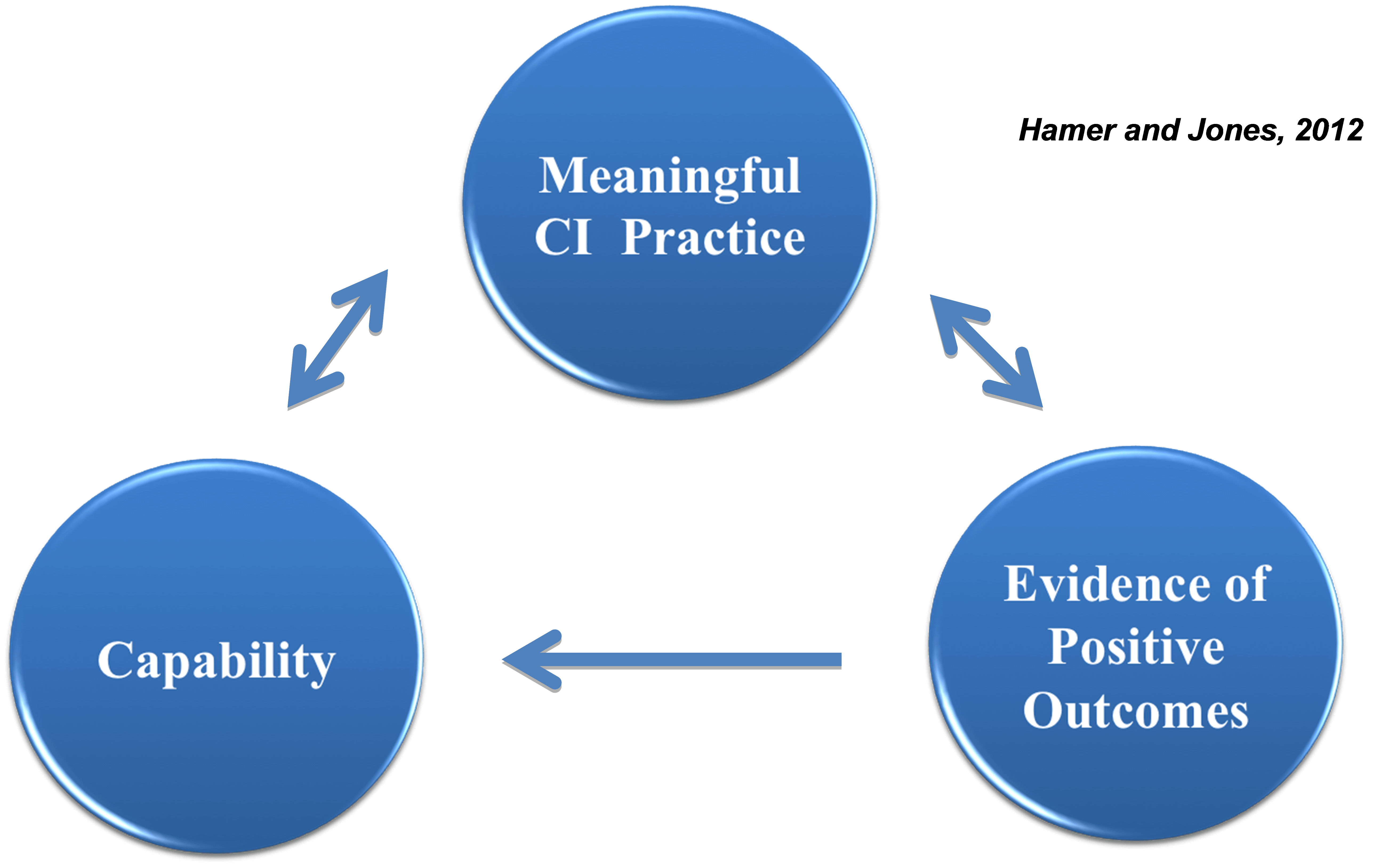The Brand: What is it and How Important is it? Part 6
This article describes and diagnoses the following elements of the Brand Index and how in this new world it can be a significant competitive advantage.
The shock wave of change
The impact to the brand
The importance of brand
The ingredients of the brand
The strategy to manage it
And
The analytical ingredients
The value to the business model
Making the brand a competitive asset
Making brand the customer loyalty process
The customer case study provides an accurate and compelling insight to the effect of a slipping brand metric and its impact on the enterprise performance.
Management becomes a respected force when it is fortified with important, accurate knowledge.
ABSTRACT
Most successful executives are concerned about their brand, which is usually loosely defined as customer satisfaction and the enterprise reputation. Brand is usually treated as a subjective only metric with some mystical ingredients and is used as a comfort index. Nothing could be more off target, as is outlined in this article, as brand is now one of the most important management metrics.
History says that customer satisfaction is generally overstated and customer loyalty is usually understated. The shock wave of a new business environment is, and can be, the positive opportunity of a much needed culture change, as it relates to brand measurements, if it is identified and managed. The need is for a more effective and efficient understanding of the accurate ingredients that are integral to the Brand Index (BI).
Once the brand analytics for the enterprise has been identified, the next step is to understand how it impacts the sales cycle and business model. A low BI will seriously impact the sales cycle as is shown in the customer case study in this article.
Customers want to be treated like they want to be treated, not how we think they need or should be treated. Most organizations view contract compliance as customer satisfaction. This view alone can serve as the first step to a sliding brand, as contract compliance doesn’t directly translate into high customer loyalty.
This paper does a dive into the underwater elements of the brand and what is the dangerous undertow that drags one off their feet and destabilizes the enterprise as described in the case study.
THE BRAND
Brand is not about customer satisfaction. It is about customer loyalty and its impact on the sales cycle and the resulting metrics. Some wise person made the point that “customer satisfaction is worthless and customer loyalty is priceless.” Brand is about success in sales performance and loyalty as a competitive asset.
So what is in a brand, why is it so important and why such an emphasis now? First it can fall faster and deeper than viewed just a few years ago. This can be directly linked to the technology changes such as the internet and bloggers. That includes the business model, the market message being obsolete, fragmented and/or incomplete where it is more about promotion than value and risk to the buyers.
Lack of customer connectivity with a disciplined effective process allows the dark forces to take charge and the enterprise never sees or hears those darkened communications. When that force swings into action it can be with devastating results lowering the brand in the mind of potential buyers and even effecting customer loyalty. Most times the enterprise management never sees or even hears these uncomfortable customer and new buyer communications.
In addition, WEB 2.0 and WEB 3.0 do, or will soon, facilitate decisions of potential purchase that are influenced by what bloggers and articles say about the enterprise and its offering. With these new capabilities, new buyers can make preliminary decisions and influence their constituencies without ever talking to an enterprise directly about their offerings.
So we know that in the past brand was a point of perception with potential new buyers and customers. Today, given an over supply of nearly everything, lack of innovation in most market segments, makes brand a key imperative, with understandable, measurable metrics. The BI is now more important than ever, as it is critical to the life support of the enterprise as we are hit by the shock waves and underground currents of this new economy. For the most part it takes a shock to make change happen quickly and now we have that in this new and uncertain, demanding economy.
BRAND ASSESSMENT OF A SUCCESSFUL COMPANY – A Case Study
The results in Figure -1 are of a successful enterprise where the CEO and CFO could not understand the performance of their enterprise in a market environment attractive to their business model. Their enterprise should have increased its growth rate and margin but instead missed their revenue plan. The enterprise is a well known company with an established customer base, revenue of approximately $500 million, with growth rates ranging between 14% and 21% and with very predictable margins. Their business model was to identify where organizations placed their cash, help them optimize it and reduce any risk or exposures to any potential losses. In this more demanding market for cash management, their business should have been growing above the 21% range, but instead only achieved 12.3% growth.
What happened and what was the prevailing question from the management and the board? Every functional organization became the suspect as to the cause of this performance degradation- R&D to Sales, Marketing, and Finance. The initial recommendations were to reduce the price and do more pro-bona assessments on new accounts. However, none of these recommendations addressed the root cause to their problem or challenges.
Sales believed they were not getting the required internal support and their executives were not readily available to visit accounts to help close the deals. Sounds like what we have all heard before and is the preverbal flashing red light.
NorthPoint was asked to analyze the issues and as such we utilized the Brand Assessment Software and associated Database.
The results were eye-opening. For the first time they had a complete picture of what their BI was and its impact on the business. Quickly assessing the sales cycle they found it was more than 2x what it was when they last measured it back in 2004. This became the fire for change. How could this happen to such a successful organization?
Upon further analysis, the organization had slipped in all areas that comprise the BI. As one executive stated, “it appears that we have moved from an intelligent approach to sales management to let’s use brute force to make the sales numbers.” Make the contacts and make the sales was the mantra of the sales management and the management in general.
In our world, leading organizations have a BI of 85% or higher. Index scores below 85% result in significant lengthening of the sales cycles and, in turn, financial performance of the enterprise. In this case, the organization’s BI was in the 37% range, resulting in a sales cycle that was 40% to 65% longer than their competition.
Unfortunately in most enterprises, sales cycles are not effectively tracked or recognized as one of the Key Metrics for Success. Clearly this is changing in this new economic environment.
Based on the results of the brand assessment (2.3x the sales cycle), here is the impact on the organization’s financials:
- The sales force Actual Contract Value (ACV) is obviously negatively impacted. For example, if the benchmark sales target for each sales person is $1,000,000, then the impact on actual performance is a fraction of the target (approximately $490,000).
- This means the revenue goals will not be achieved, unfortunately many times a shock to the organization.
- It also meant that the cost of the sales personnel will also increase as a percent of revenue. Conventional thinking would say to archive the original revenue target as it will require more sales support and sales personnel. While the assessment said “Fix the Brand”
- This gave the competition a free ride, instead of having the shortest sales cycle in the industry that places the competition on the defensive; it was the other way around.
- The loss of interest in established customer accounts precipitated a deeper dive which revealed that a number of established customers were entertaining a competitive offering and solution.
In this case, marketing was about promotion and not about customer and new buyer connectivity. No one had identified the value propositions of the latest offering and validated them with new buyers or customers. The market message was inadequate, incomplete and only managed though less that one-half of the required marketing channels.
In addition, they had added new sales personnel; however the training was not developed or executed as required to be effective. The training curriculum and content scoring was in the high 40% on a scale of 1% to 100%.
The company had slipped in the most basic sales fundamentals and lacked the metrics to give them any diagnostic precision of their illness. It was like they moved from a healthy diet to fast food without the blood tests that would have identified signs of trouble. We all understand that good healthcare requires routine testing on a regular basis. The same thinking should prevail for the enterprise – get the fundamentals identified, get the test results and take action.
In this case study, this did not happen until the brand test was performed and then the diagnostics produced the demographics of the illness. Then, and only then, did the prescriptions begin with a new sense of immediacy.
With the brand results as their diagnostics they are back to taking each of the summary parts of the brand listed in Figure -1 and developing a high speed rail to their customers with a real, effective connectivity process with a new and much improved market message that is carefully developed and executed though all of the required communications channels.
Improvements quickly appeared, as entry points into accounts increased and at higher levels with new buyers and existing customers. The market messages are now focused on buyer needs and not on sellers products.
SUMMARY
What we have found is that brand is easy to lose and difficult to improve. Now more then ever, it is an enterprise barometer. Without metrics and an analytical tool that is accurate, predictive and quantifiable, issues will not be diagnosed and a recovery process put in place until the organization’s financials have been impaired. The best people in the enterprise should own each of the metrics in Figure-1 as they will have considerable influence in bringing the enterprise back to a leadership position and gain the customer loyalty, which is priceless.
Brand will always be stretched and needs to be proactively assessed based on the following activities:
1. Entering new markets and market segments not previously addressed
2. New technology as part of a new offering
3. New offering not previously part of the enterprise history
The “loose confederation of warring tribes” between R&D, marketing and sales has to recognize that combined work has to be done to address the change of opportunity for any enterprise. Additionally, marketing has to take new leadership in assessing new buyers’ and customers’ unmet needs.
The metrics need to be both prescriptive and predictive, accurate and reliable, and be used with confidence to run the business.
Last, but not least, is to find the best way to identify costs that can be reduced, eliminated or postponed. Follow the yellow brick road of your brand assessment with all of the ingredients that make-up the brand index and ROI. Figure -1 shows a very attractive ROI (41%) for our case study. Making the ingredients of the brand, the focus of the effort will point to a new, more resilient and streamlined business resource management; and therefore new improved cost opportunity.
Couple this with the last article, on how to assure achievable revenue, is the wining game plan for enterprise management in this new season of a new economy where everyone is keeping scores of the wins and losses. As WEB 2.0 and 3.0 gain maturity they will provide both accurate and inaccurate knowledge to prospective new buyers as well as customers.
Unfortunately, we deal in a world where data and knowledge move at web speeds and can be totally inaccurate or in many times, just plain in error. Once obtained, false knowledge is likely to be more easily accepted than the determined search for truth. The time for analytics, real time, static, prescriptive and predictive is here and the time to implement brand as a strategic weaponized metric for competitive advantage is now.
Dave Chapman is the CEO of NorthPoint Software & Services and can be contacted at 508-942-6440. For more information visit: http://www.thenorthpointgroup.net





